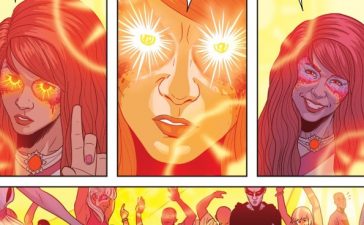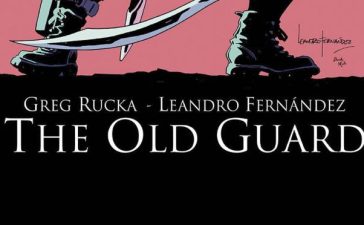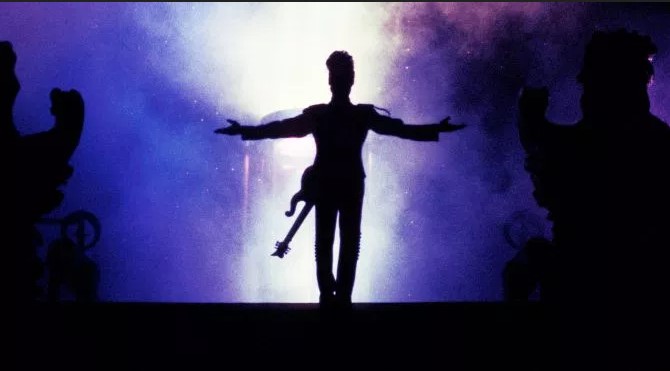
The Wicked+The Divine, Prince & Modern Pop Music

On April 21st, 2016, popular music lost one of it’s most innovative and important artists in the passing of Prince Rogers Nelson, or as he’s most often to referred to as, Prince. The singer’s death caused a mixture of emotional outpourings from fellow musicians, those in the record industry, music writers & fans alike. As a solo artist, Prince touched so many peoples lives in different ways while being one of the most prolific and forward thinking artist of the 20th century. Skewing genre, Prince’s DNA can be found across the modern pop landscape in rock, EDM, hip hop & modern R&B in equal measure. One only needs to take a cursory listen to Justin Timberlake, Kanye West, Calvin Harris, Daft Punk, Taylor Swift, Justin Beiber, A$AP Rocky, MIA, Diplo, Miguel, Fetty Wap, MGMT, Frank Ocean, Skrillex, Young Thug or any number of popular musical artists and hear Prince’s DNA engrained within the sound. So when the prolific creative partnership of Kieron Gillen, Jamie McKelvie, Matt Wilson & Clayton Cowles teamed up to create the ongoing creator owned series, The Wicked+The Divine, a comic book where several pop star analogues are made as gods visiting earth for a brief two years and thrown into modern celebrity culture, a character representing Prince was a no brainer, even if they held back on revealing very much about the character until the books second arc. Based on the Summerian god of love, fertility & warfare, Inanna arrived in issue six of the series fully realized and instantly recognizable as Prince. But in the wake of the artists untimely passing, looking at how The Wicked+The Divine explores Prince through the symbolism of Inanna & the Pantheon in the fandemonium arc and how his legacy influenced the analogue character’s explored in Commercial Suicide gives a fascinating portrait of modern popular music, Prince’s place in it and how we got here.
“Until I find a righteous one, computer blue”
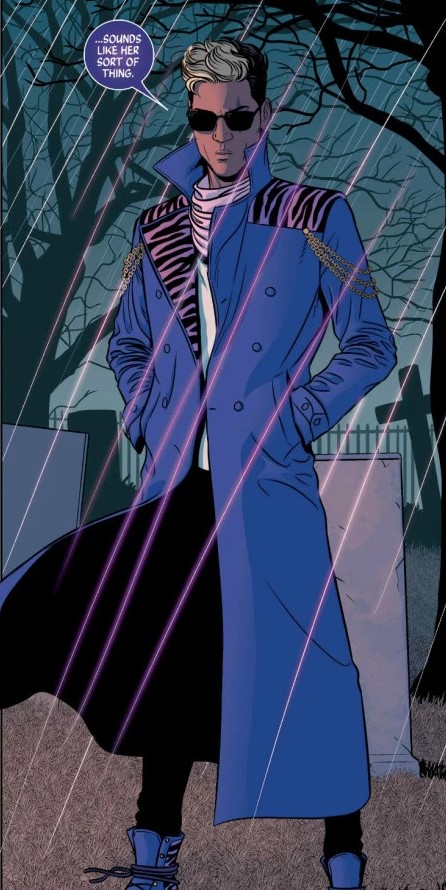
The Wicked+The Divine is a brilliant commentary on pop music, celebrity culture and religion but perhaps inadvertently, it’s also become one of the best ongoing superhero comics in the medium and superior to almost anything from DC or Marvel in terms of a traditional take on the genre. Wicked+The Divine does this in a couple of simplly genius ways, the first being the motif of teen’s getting superpowers inexplicably and the second by using pop music iconography as a recognizable symbol for it’s superhuman characters so anybody that picked up the comic could easily identify it’s and understand it’s protaginist. Of the many gods in what Wicked+The Divine call The Pantheon, some are straight up one to one comparisons like Sakhmet & Rhianna or Amaterasu & Florence Welch. Others are more an amalgam of different archtypes the way Baal represents early African American rock n’ roll innovators up to modern day Hip Hop or Odin representing modern EDM tropes. Inanna is the former and perhaps the most direct analogue for a pop star in the series in his representation of Prince. The moment Inanna is first introduced via a phone call where just hearing the sound of his voice for the first time makes Laura Wilson feel like taking her clothes off, the character is clearly Prince even before you get to McKelvie and Wilson’s stunning purple clad introduction in the cemetery that Inanna thought was “low key” Wicked + The Divine so distinctly captures Prince in that opening introduction, partially because the creators have such a strong grasp on the artist, but moreover because there is no other artist like Prince. Before his death, could you name another living pop star as synonymous with sexuality that describing his voice over the phone as an almost ethereal and overpowering sexual turn on would be believable? For as flamboyant as fashion in modern pop has gotten, could the clothes or look of Inanna be anybody but Prince? And even the dialogue is spot on, compared to what Prince was wearing on his third album cover, that outfit is pretty low key. If Gillen & McKelvie wanted to incorporate Prince into the series, they had to go all the way just for how singular Prince was a pop star.
“I’m not human, I’m a dove. I am conscious. I am love. All I really need is to know that you believe”
Prince is paired with the ancient Summerian goddess Inanna, the deity of love, fertility & warfare. The choice of Inanna for Prince is interesting in it’s consideration of gender, what it represents and it’s age in relation to the rest of the gods in Wicked + The Divine’s The Pantheon. Inanna is refered to as a goddess or female, though in consideration of god as a concept, gender is somewhat fluid by nature. Since he started, Prince’s gender fluidity has been a trademark in his style and music. While Prince has always identified and mostly wrote from a straight male perspective, he’s consistently incorporated elements of femininity into every aspect of his art to the point that the lines between male and female are completely blured. More then his flamboyant wardrobe, Prince sang from a perspective that transcended gender in his content and approach. Prince sings about sex often, but it’s a sex that spurned by a shared vulnerability between the two partners in a way that fully realizes both male and female as one in the same. With Inanna being the god of love & fertility, that she is labeled a goddess is understandable as those are traits we generally associate with females. Through his music, Prince shatters that paradigm and as such, his sexuality is perhaps the most pure representation of love in how it connects male and female into one being. Love, sex and gender are fluid constructs in Prince’s music and that transfers over to Wicked + The Divine’s representation of the artist in the goddess Inanna.
“I wanna be your brother. I wanna be your mother and your sister too”
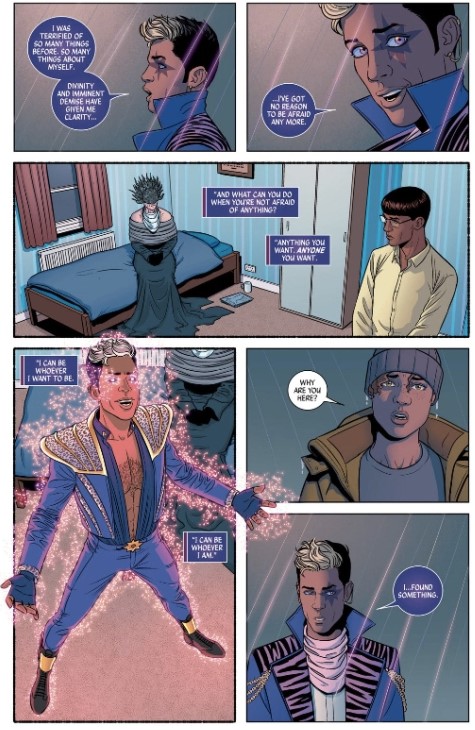
The representation of love with Prince is related to the gender fluidity but even more then that, Prince’s art was almost always an exploration of love in it’s many forms. It’s looking at love in longing for someone else on I Wanna Be Your Lover, in the fear and excitement of Little Red Corvette, in the anticipation of Kiss, in the sadness and mourning of Sometimes It Snows In April or the sheer monumental outpouring of soul and emotion in Purple Rain. The Wicked + The Divine streamlines a lot of this in it’s usage of Inanna, we never get the full perspective of the character but instead, are allowed to make assumptions based on his similarities with Prince, the god he represents and to see him contrasted with his adversary Bamphonet. There’s a fascinating idea here in the relationship between the two gods and the legacy of Prince on modern popular music. From the late seventies through the late eighties, Prince was consistently the most important musical artist on the planet. In terms of appeal, innovation and pure artistic merit, no single musical act was on his level. As an artist, Prince’s music defied genre definitions or classification while it’s message and ideology was firmly centered on this idea of love and the many shades of emotion that it brought out. It was art that celebrated intimacy and vulnerability, all of which in turn, shaped popular music around Prince’s ideology on some level. That changed in the early nineties and like with most music of the period, the shift in culture comes primarily from the phenomenon of Nirvana. Equally as iconic though with a much smaller window in their peak, Nirvana’s sound was stripped down to bear bones punk rock with a dark cynicism that steered rock & roll and pop music away from the more eclectic styling’s and affectionate worldview of Prince. This is not a value judgment of one to the other as I think both Nirvana & Prince deserve more then the praise they get and had Kurt & Prince ever hanged, I’d imagine the two would have a lot in common. What Nirvana did do was shift the direction of music away from Prince both sonically and philosophically. Enter Baphomet.
“I asked her if she wanted to dance and she said all she wanted was a good man”
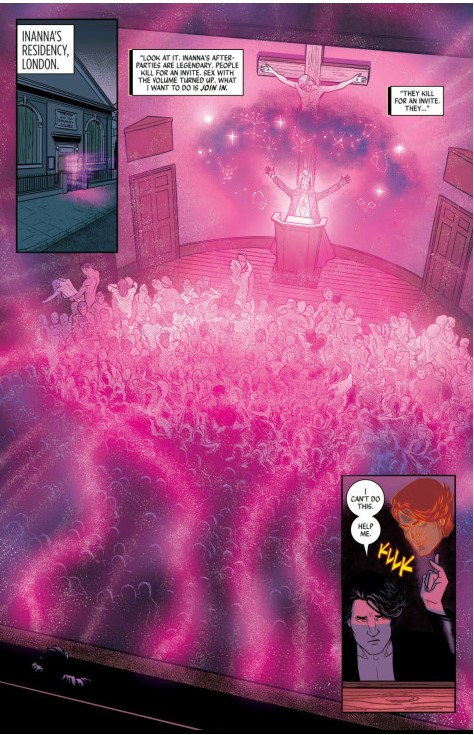
I don’t think the Baphomet character is an exact one to one analogue to Nirvana by any means. In fact, I believe that Nirvana would reject that analogue entirely and rightfully so. It’s more about the archetype that Nirvana represents, that of the rock n’ roll rebel, an archetype that was put upon them and became the standard bearer for the genre afterwards. The band’s ascencion all happened at the same time as Prince’s own popularity was waining while he battled with his record company. By the time of Cobain’s death, Prince’s version of rock n’ roll had been overtaken by “grunge” & “alternative”, genre terms that were basically used as qualifiers for particular strain of mostly white rock music that was inspired by punk & new wave. The use of Baphomet as god representing that strain of pop culture is interesting because of the god itself. Baphomet was a god that the Knights Templar were accussed of worshipping by the incuisition but was never formally believed to be a deity that was actively worshipped by the Knights Templar or others at the time. It’s origin is murky with the name believed to derived from the word used for mosques in the first crusade as a corruption in the French language of the name Mohammad. There isn’t any concrete proof that the Knights were worshiping a god called Baphomet or Islam for that matter. But the myth of Baphomet has persisted and grown into a occult figure all it’s own. Used in the context of The Pantheon as pop music avatars, the parallel’s between the real life Baphomet and the one of the comic contain multitudes. You could see Baphomet’s origin, a very Eurocentric interpretation, and in some ways misunderstanding, of an outside culture, the way it morphed into something all it’s own despite it’s dubious origins or it’s relative age in relation to the other gods used in the Pantheon and make similar arguments for the strain of rock & roll that led to the “alt culture” which would eventually overshadow Prince; a Eurocentric reconfiguration of black music that quickly took on a life of it’s own as a signifier of rebellion against social norms. Appropriately enough, Baphomet kills Inanna to extend his own life. In a post Nirvana pop culture, the sound of Prince was made irrelevant in rock & roll and to a wider degree; the popular music that followed.
“I’ve seen the future and it works”
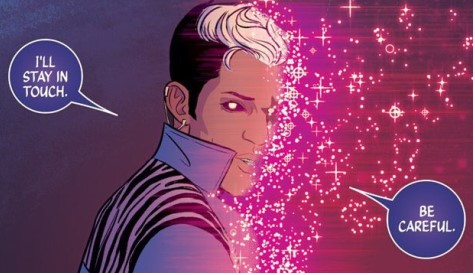
The first song on Prince’s Batman soundtrack is called “The Future”; it’s a strange and dark minimalist track that builds sounds and musical arrangements on top of the a dull humming looped up synth and drum pattern. It also sounds like a song directly from Kendrick Lamar’s most recent EP, Untitled, Unmastered, created almost thirty years prior. This isn’t something that’s unique to Lamar’s album; listen to Chrvches Leave A Trace
Jeremiah’s Oui
Future & The Weeknd’s Low Life
Rhianna & Drake’s Work
Each of these songs and artist are distinctly different from one another in terms of sound, content and aesthetic yet each has Prince’s DNA undoubtedly embedded within it. While not the focus of the Wicked + The Divine’s following arc, Commercial Suicide, the effect of Inanna and his death is unmistakable as the book spends the next five issues profiling his fellow Pantheon gods. This is explicitely referenced in issue #12, a one shot that explores the character Inanna based on his relationship to Baal, the series Hip Hop analogue. It’s also Comercial Suicides most clear analogy to Prince’s influence on modern popular music, the two being former lovers that Baal ultimately rejected out of insecurity for his own masculinity, but Inanna is felt throughout in the future stories of Sakhmet, Tara or Odin. The actual god Inanna is the oldest deity represented in Wicked + The Divine’s Pantheon and in a way, you see the character’s influence across the rest of the Pantheon much in the same way you see Prince’s influence across modern pop music and it’s many iterations.
“Balling in the middle of the club, North Jersey”
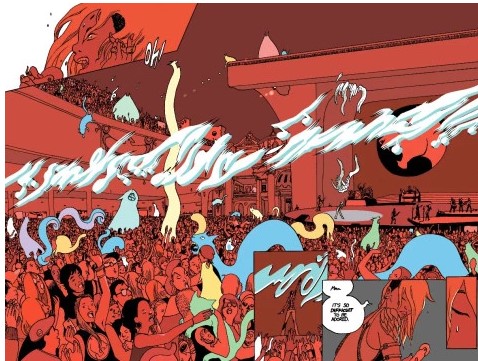
Prince Rogers Nelson was pronounced dead on the morning of April 21st 2016. But like Inanna in The Wicked + The Divine, the impact Prince made was immediately felt in perhaps the three best albums of 2016 so far, all released in the wake of Prince’s death and from completely different ends of the pop music spectrum*. One was Beyonce’s Lemonade, the biggest pop star in the world making a genre bending epic whose production ranged from soul to classic country to trap seamlessly on an album about dealing with her famous husbands infidelity with an extended film rendition of the album and it’s themes airing on HBO. On the other side, via Prince’s hometown record label Rhymesayers, underground rap lifer Aesop Rock released the extraordinary Impossible Kid LP with some of his most personal and focused music of his career accompanied by a shot for shot reenactment of Stanley Kubrick’s the Shinning with paper cutouts. Then Radiohead, perhaps the most important rock band in the world, completely erased their entire online presence before releasing their first two singles to the internet including Daydreaming, with a Paul Thomas Anderson directed music video which was played in surprise showings at movie theatres across the United States in accompany with perhaps their best work since Kid A in their Moon Shaped Pool album. While each was completely singular to the individual artists from different scenes and backgrounds, so much of the sound, aesthetic and presentation is indebted to Prince in one way or another. Or maybe it’s even simpler then that; take The Drake & Future song Diamonds Dancing. Drake & Future did a supehero team up one off album titled What A Time To Be Alive that was basically stacked end to end with songs designed to get listeners turnt the fuck up whether that be on the dancefloor, in concert halls, in the car or anywhere that the music felt appropriate. With a sound archtiected by 21 year old trap beat wunderkid Metro Boomin of St Louis, Diamonds Dancing chorus has the line “Balling in the middle of the club, North Jersey” it’s a throw away line that works as a knowing wink to the regions club scene where up and coming stars of urban radio can sell out out dingy modern day juke joints across the vast suburban sprawl and build up their buzz and concert revenue earning’s in a key market before they’re arena ready. There aren’t many videos of Prince performing live on streaming video platforms, most are recent from third parties that own the rights to the content like the NFL and the artists Super Bowl performance or Radiohead’s video of him covering their seminal hit Creep at Coachella. Out of the limited content, one particular video stands out in the black & white video of Prince playing a small club in Pasiac New Jersey in 1982. Three albums into his career, the guy is already there tearing down the club, playing the role of guitar god & crooner sex symbol in equal measure, balling out at the club in North Jersey and getting the crowd turnt the fuck up before those terms were even invented.
Inanna & Prince; it’s all one in the same. Real gods never lived or died by any standard of humanity, they’ll always have life within us whenever we catch their spirits.





